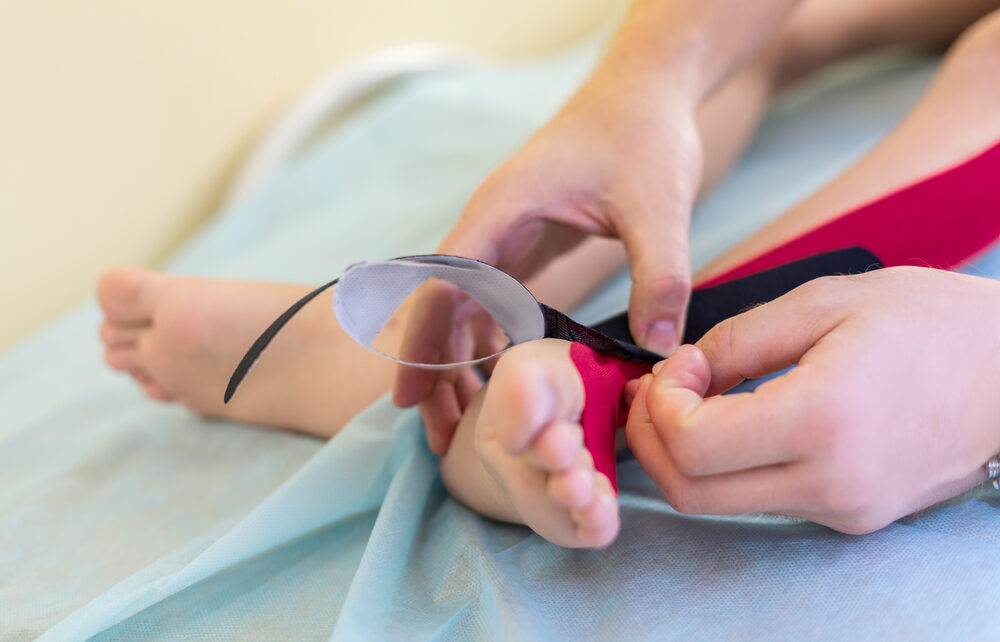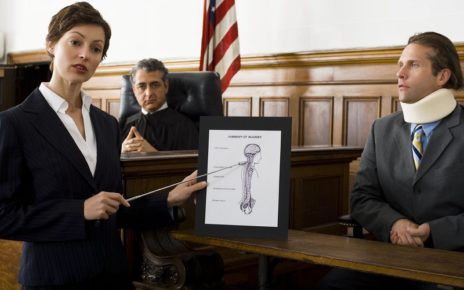Defining Erb’s Palsy: A Medical Overview
Erb’s Palsy is a condition that primarily affects infants and results from nerve damage during birth. Specifically, it involves injury to the brachial plexus, the network of nerves that sends signals from the spine to the shoulder, arm, and hand. This injury can occur when there is excessive pulling on the neck during delivery, leading to a range of motion and sensory deficits in the affected limb.
The severity of Erb’s Palsy can vary, with some children experiencing mild symptoms that improve over time, while others may face significant challenges requiring ongoing therapy and, in some cases, surgery. The prognosis for each child depends on the extent of the nerve damage and the timeliness of intervention.
- Birth trauma can result in various injuries such as brachial plexus injury, with different prognoses and management options.
- Advances in obstetrics have reduced mortality rates due to birth trauma, but the risk of conditions like Erb’s Palsy remains a concern for healthcare providers and parents alike.
The Physical Challenges for Young Athletes
Young athletes with Erb’s Palsy face unique physical challenges that can affect their participation in sports. The condition, typically resulting from a birth injury, primarily impacts arm function due to nerve damage in the brachial plexus. This can lead to a range of motion limitations, muscle weakness, and even partial or complete paralysis of the affected limb.
- Range of Motion Limitations: Athletes may struggle with lifting, reaching, or rotating the affected arm, which can hinder their ability to perform certain movements essential to various sports.
- Muscle Weakness: The lack of strength in the arm or shoulder can reduce an athlete’s power and endurance, making it difficult to compete at the same level as their peers.
- Partial or Complete Paralysis: In more severe cases, the inability to use the affected limb can necessitate significant adaptations to participate in sports activities.
Despite these challenges, with the right support and adaptations, young athletes with Erb’s Palsy can still engage in sports. It is crucial for sports programs to recognize these physical limitations and work towards creating opportunities that allow these athletes to thrive.
Psychosocial Effects on Children with Erb’s Palsy
Children with Erb’s Palsy may face unique psychosocial challenges that extend beyond the physical limitations of their condition. The visibility of their impairment can lead to self-consciousness and social anxiety, particularly in group settings like sports. The struggle to participate in activities that their peers can easily engage in often results in feelings of frustration and isolation.
The impact on a child’s self-esteem can be profound. They may grapple with a sense of difference and a lack of confidence in their abilities. It is crucial for sports programs to address these issues by:
- Fostering an inclusive atmosphere where differences are celebrated.
- Encouraging teamwork and focusing on each child’s strengths.
- Providing peer support opportunities to reduce feelings of isolation.
Moreover, the role of coaches and parents in offering positive reinforcement and understanding cannot be overstated. By promoting an environment of acceptance and encouragement, children with Erb’s Palsy can thrive emotionally and socially, gaining the confidence to overcome challenges both on and off the field.
Designing Inclusive Sports Programs
Principles of Adaptive Sports
Adaptive sports programs are designed to accommodate the unique needs of individuals with physical disabilities, such as Erb’s Palsy. These programs follow a set of core principles that ensure every participant has the opportunity to engage in athletic activities in a safe and supportive environment.
- Inclusivity: Ensuring that sports activities are accessible to all, regardless of their physical abilities.
- Adaptation: Modifying sports equipment and rules to meet the needs of participants with different abilities.
- Equality: Providing an equitable experience for all athletes, so that everyone has a chance to compete and succeed.
- Empowerment: Encouraging athletes with disabilities to take control of their sports experience and to make decisions that affect their participation.
These principles serve as the foundation for creating sports programs that are not only accommodating but also enriching, allowing young athletes with Erb’s Palsy to thrive. By adhering to these guidelines, sports programs can foster a sense of belonging and achievement among participants, while promoting physical health and psychological well-being.
Creating a Welcoming Environment
A welcoming environment is crucial for the integration of youth with Erb’s Palsy into sports programs. It begins with the physical space, which should be accessible and equipped with the necessary adaptations to ensure all athletes can participate fully and safely. This includes providing specialized equipment and modifying facilities to accommodate various physical abilities.
Beyond the physical, the atmosphere of inclusivity is fostered by the attitudes and actions of staff and participants. Key elements include:
- Respectful Communication: Using language that is inclusive and avoids singling out individuals based on their disability.
- Positive Reinforcement: Celebrating achievements, no matter how small, to build confidence and a sense of belonging.
- Peer Support: Encouraging relationships between athletes to create a supportive network that extends beyond the playing field.
- Family Involvement: Inviting families to participate in events and decision-making processes to reinforce the support system for the young athlete.
These efforts collectively contribute to a nurturing environment where young athletes with Erb’s Palsy can thrive and develop not only their athletic skills but also their social and emotional well-being.
Collaboration with Healthcare Professionals
The integration of healthcare professionals into sports programs for youth with Erb’s Palsy is a critical component for success. These experts bring a wealth of knowledge regarding the physical limitations and capabilities of young athletes with this condition. By working closely with coaches and program directors, they can help tailor activities that are both safe and beneficial for participants.
Key areas of collaboration include:
- Assessment and Planning: Medical professionals can assess each athlete’s specific condition and recommend individualized modifications to sports activities.
- Training and Education: They provide valuable training to coaches and staff on how to manage the unique needs of these athletes, including emergency response protocols.
- Ongoing Support: Regular check-ins and updates ensure that the sports program evolves with the changing needs and abilities of the youth.
This collaborative approach not only enhances the safety and effectiveness of the sports program but also ensures that every child has the opportunity to participate in a meaningful way. It underscores the importance of a multidisciplinary team in fostering an inclusive and adaptive sports environment.
Case Studies: Successful Adaptations in Sports
Innovative Programs in Action
Across the globe, sports programs are creatively adapting to include youth with Erb’s Palsy, ensuring that these young athletes are not sidelined due to their condition. These programs are redefining inclusivity in sports, showcasing how modifications and specialized equipment can enable participation at all levels.
Key elements of these innovative programs include:
- Customized training routines tailored to individual capabilities
- Use of adaptive sports equipment to assist with mobility and grip
- Modified rules to accommodate varying degrees of physical ability
One standout example is a swimming program that has introduced one-on-one coaching sessions to accommodate the limited arm movement associated with Erb’s Palsy. Another is a basketball clinic that has developed a series of drills specifically designed to strengthen the affected arm and improve coordination. These programs not only enhance physical fitness but also boost confidence and social skills among participants.
Athlete Spotlights: Triumphs and Challenges
The journey of young athletes with Erb’s Palsy is marked by a series of triumphs and challenges that are as unique as they are inspiring. Each story sheds light on the remarkable adaptability and resilience required to excel in sports despite physical limitations.
- Emma, a swimmer, has mastered her strokes using specialized training techniques that accommodate her range of motion. Her victories in the pool are a testament to her determination and the tailored coaching she receives.
- Liam, who found his passion in wheelchair basketball, exemplifies the power of adaptive sports. His dexterity and strategic thinking on the court have earned him accolades and have shown that physical challenges do not define an athlete’s potential.
- Ava, a track and field athlete, has overcome the hurdles of Erb’s Palsy with customized equipment and sheer willpower. Her participation in races is not just about competing; it’s about setting new personal bests and breaking barriers.
These narratives not only highlight the athletes’ personal achievements but also underscore the importance of supportive sports programs and communities. The challenges they face, such as limited mobility or the need for special equipment, are met with innovative solutions and a spirit of inclusivity. As these athletes push the boundaries of what is possible, they pave the way for others to follow in their footsteps.
Lessons Learned and Best Practices
The journey of integrating youth with Erb’s Palsy into sports programs has yielded valuable insights. Key lessons have emerged, emphasizing the importance of individualized approaches and the need for ongoing evaluation and adaptation of programs.
- Personalization is Crucial: Tailoring activities to each athlete’s abilities ensures not only their safety but also their enjoyment and sense of achievement.
- Continuous Learning: Coaches and organizers must stay informed about the latest medical and therapeutic advancements to provide the best support.
- Community Engagement: Involving family and peers in the sports experience enhances motivation and fosters a supportive network.
Best practices have also been established to guide future programs. These include comprehensive training for coaches on Erb’s Palsy, the use of adaptive equipment, and the implementation of feedback mechanisms to monitor athletes’ progress and satisfaction. By adhering to these practices, sports programs can become a beacon of inclusivity and empowerment for all participants.
Training and Support for Coaches and Trainers
Educational Workshops and Certifications
The cornerstone of any successful adaptive sports program lies in the education and preparation of its coaches and trainers. Educational workshops are designed to equip these key figures with the necessary knowledge and skills to effectively work with youth who have Erb’s Palsy. These workshops often cover a range of topics, including understanding the condition, learning adaptive techniques, and fostering an inclusive environment.
Certification programs serve as a validation of a coach’s or trainer’s ability to handle the specific needs of athletes with Erb’s Palsy. Certifications typically involve both theoretical learning and practical assessments, ensuring that participants are well-versed in:
- The anatomy and physiology related to Erb’s Palsy
- The latest research on adaptive sports and physical therapy
- Strategies for creating individualized training plans
- Methods for assessing athlete progress and adjusting programs accordingly
By completing these programs, coaches and trainers not only gain valuable insights but also demonstrate their commitment to providing a supportive and adaptive sports experience for all participants.
Communication and Motivational Strategies
Effective communication is the cornerstone of any successful sports program, especially when it involves young athletes with Erb’s Palsy. Coaches and trainers must develop a keen understanding of how to convey instructions and feedback in a manner that is both accessible and empowering for these individuals.
- Active Listening: Coaches should practice active listening to understand the unique needs and concerns of each athlete.
- Positive Reinforcement: Celebrating small victories and progress can boost confidence and motivation.
- Individualized Communication: Tailoring communication strategies to fit each athlete’s learning style and physical capabilities is crucial.
- Encouragement of Self-Expression: Athletes should be encouraged to voice their own goals and challenges, fostering a two-way dialogue.
Motivational strategies should be designed to inspire and engage young athletes, helping them to overcome obstacles and strive for excellence in their chosen sports. By setting achievable goals and providing consistent support, coaches can help athletes with Erb’s Palsy to not only improve in their sport but also to build resilience and a positive self-image.
Safety Measures and Injury Prevention
Ensuring the safety of young athletes with Erb’s Palsy is paramount in any sports program. Coaches and trainers must be equipped with the knowledge and tools to prevent injuries and respond effectively when they occur. A multi-faceted approach to safety can include the following measures:
- Regular safety audits of equipment and facilities to identify and mitigate potential hazards.
- Tailored warm-up and cool-down exercises that address the specific needs of athletes with Erb’s Palsy.
- Implementation of modified rules or equipment to reduce the risk of strain or injury to vulnerable areas.
In addition to preventative measures, having a clear action plan for emergencies is crucial. This should involve:
- Training staff in first aid and emergency response specific to the needs of athletes with Erb’s Palsy.
- Establishing protocols for immediate care and referral to medical professionals when injuries occur.
- Keeping detailed records of incidents to help refine safety strategies over time.
By prioritizing safety and injury prevention, sports programs can create a secure environment that allows young athletes with Erb’s Palsy to participate confidently and to the best of their abilities.
Engaging the Community and Fostering Inclusivity
Building Partnerships with Local Organizations
Forging strong partnerships with local organizations is a cornerstone for creating an inclusive sports environment for youth with Erb’s Palsy. These collaborations can provide essential resources, expertise, and support to enhance the quality and accessibility of sports programs.
Key steps to building these partnerships include:
- Identifying potential local partners, such as schools, healthcare facilities, and community centers.
- Establishing common goals that align with the mission of inclusive sports programs.
- Developing a plan for collaboration that includes roles, responsibilities, and expectations.
- Maintaining open communication channels to ensure ongoing dialogue and feedback.
By working together, sports programs and local organizations can create a network of support that empowers young athletes with Erb’s Palsy. This network not only aids in the development of tailored sports activities but also helps in integrating these youth into the broader athletic community.
Raising Awareness and Advocacy
Raising awareness and advocacy are critical components in the journey towards creating inclusive sports programs for youth with Erb’s Palsy. Awareness campaigns serve to educate the public about the condition and the importance of adaptive sports, while advocacy efforts can lead to increased funding and policy changes that support these programs.
Key steps in raising awareness include:
- Organizing informational events and workshops within the community.
- Utilizing social media platforms to share stories and successes of young athletes with Erb’s Palsy.
- Partnering with local media to highlight the benefits of sports participation for all children, regardless of physical limitations.
Advocacy, on the other hand, involves:
- Engaging with policymakers to ensure that the needs of children with Erb’s Palsy are considered in sports programming.
- Collaborating with disability rights organizations to amplify the voice of the community.
- Encouraging families and athletes themselves to become advocates for inclusive sports opportunities.
Together, these efforts not only promote understanding and acceptance but also pave the way for tangible improvements in the lives of young athletes with Erb’s Palsy.
Encouraging Peer Support and Mentorship
The power of peer support and mentorship in sports programs for youth with Erb’s Palsy cannot be overstated. When young athletes see their peers overcoming similar challenges, it fosters a sense of possibility and shared understanding. Mentorship from older or more experienced athletes provides invaluable guidance and inspiration, helping to build confidence and resilience.
Key elements of a successful peer support and mentorship initiative include:
- Establishing a buddy system that pairs younger or less experienced athletes with mentors.
- Organizing regular meet-ups or social events to facilitate bonding and the exchange of experiences.
- Providing training for mentors to ensure they are equipped to offer the right kind of support and encouragement.
By integrating these elements into sports programs, organizations can create a nurturing environment that empowers all participants. The benefits extend beyond the field or court, as these relationships often contribute to personal growth and the development of life skills.





